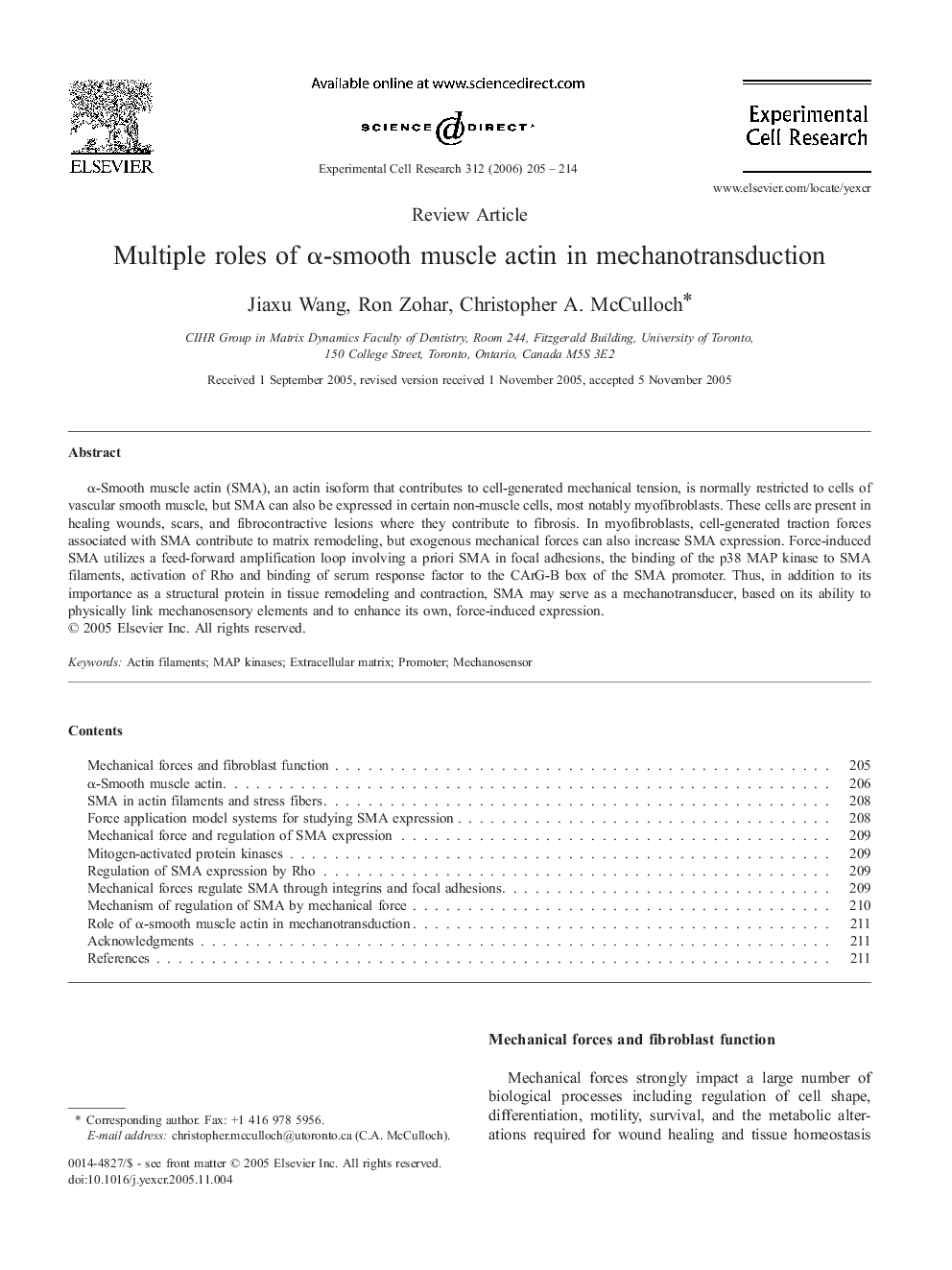| Article ID | Journal | Published Year | Pages | File Type |
|---|---|---|---|---|
| 2133143 | Experimental Cell Research | 2006 | 10 Pages |
α-Smooth muscle actin (SMA), an actin isoform that contributes to cell-generated mechanical tension, is normally restricted to cells of vascular smooth muscle, but SMA can also be expressed in certain non-muscle cells, most notably myofibroblasts. These cells are present in healing wounds, scars, and fibrocontractive lesions where they contribute to fibrosis. In myofibroblasts, cell-generated traction forces associated with SMA contribute to matrix remodeling, but exogenous mechanical forces can also increase SMA expression. Force-induced SMA utilizes a feed-forward amplification loop involving a priori SMA in focal adhesions, the binding of the p38 MAP kinase to SMA filaments, activation of Rho and binding of serum response factor to the CArG-B box of the SMA promoter. Thus, in addition to its importance as a structural protein in tissue remodeling and contraction, SMA may serve as a mechanotransducer, based on its ability to physically link mechanosensory elements and to enhance its own, force-induced expression.
